Discover the Timeless Beauty of Kyoto – From Temples to Taste buds
Welcome, travelers and cultural enthusiasts! Prepare to embark on an evocative journey as we unveil the ancient allure of Kyoto. This storied city, once the imperial capital of Japan, stands today as a testament to the nation’s rich history and its unwavering bond with culture and cuisine. Whether you’re a history buff, a spiritual seeker, or a gastronome, Kyoto promises an unforgettable adventure. Get ready to add these experiences to your travel bucket list and indulge in the charming blend of past and present that defines this magnificent city.
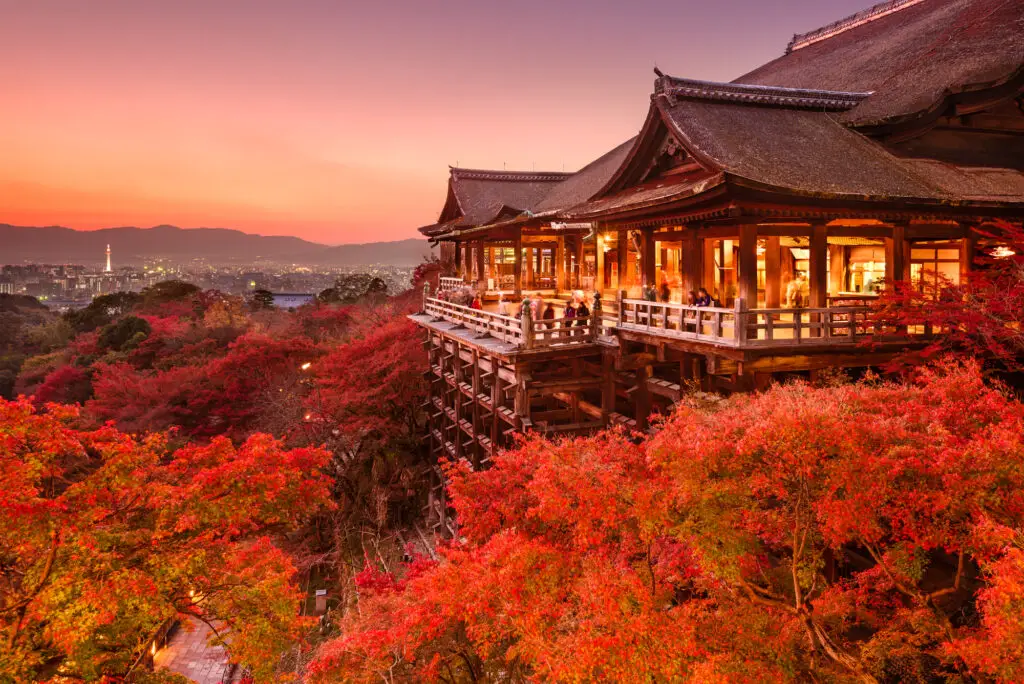
Exploring the Golden Pavilion: Kinkaku-ji
Behold the splendor of Kinkaku-ji, the Zen Buddhist temple officially known as Rokuon-ji. This glistening structure, coated in gold leaf, casts a stunning reflection upon the mirror pond in its garden, embodying extravagance and tranquility. As a UNESCO World Heritage site, Kinkaku-ji holds significant cultural importance and offers a breathtaking spectacle for visitors from all walks of life.
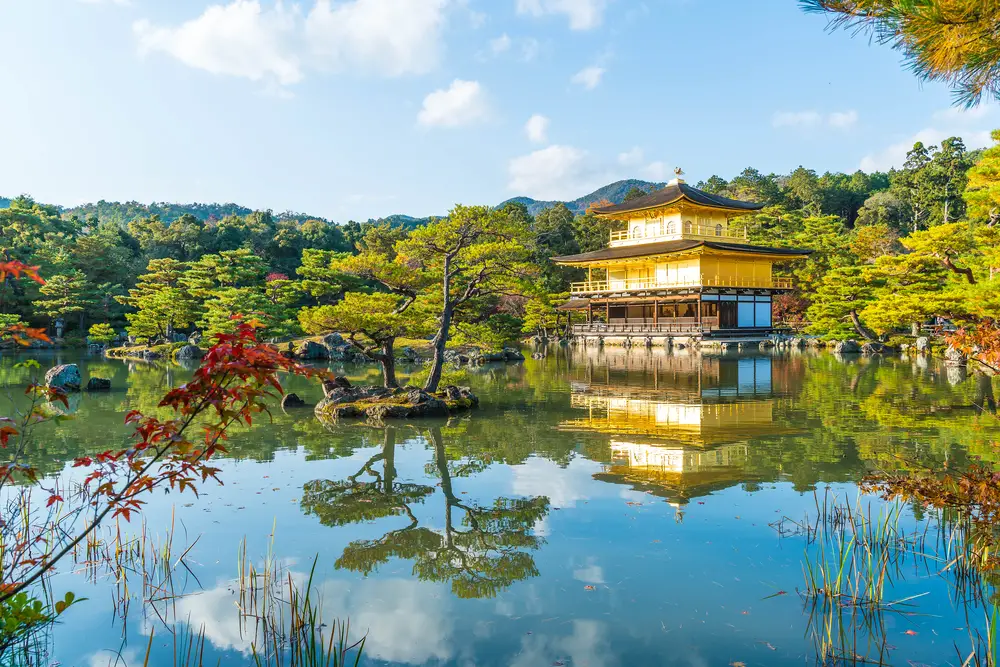
The best time to capture the Golden Pavilion in all its glory is early or late afternoon, when the soft sunlight enhances its golden hue. Photographers will also appreciate the autumn months for the contrast of vibrant fall colors or a winter visit when the temple is often embraced by a delicate snowfall. Plan your visit during weekdays, if possible, to avoid the weekend crowds and enjoy a more intimate encounter with this masterpiece of Japanese aesthetics.
Wandering through the Arashiyama Bamboo Grove
Within the western outskirts of Kyoto lies a mystical pathway unlike any other: the Arashiyama Bamboo Grove. As you tread softly through the soaring green stalks, the whispers of bamboo leaves overhead will transport you to an otherworldly realm of peace and wonder. The gentle sway of the bamboo canopy creates a serene ambiance, perfect for contemplation and nature appreciation.
A visit to Arashiyama would be incomplete without exploring its surrounding attractions. The Iwatayama Monkey Park offers an entertaining and slightly wild counterpoint to the grove’s tranquility, where visitors can interact with playful macaque monkeys in their natural habitat. Realize, however, that the park requires a bit of a hike up the hill, rewarded with panoramic views of the city. Additionally, the iconic Togetsukyo Bridge is an idyllic spot for viewing cherry blossoms in spring or the fiery palette of autumn leaves.

It’s recommended to visit the bamboo grove early in the morning or during the week, as weekends and holidays draw significant crowds. Twilight creates a magical atmosphere in the grove and challenges the photographer’s skill to capture its evanescent beauty.
Strolling through the Historic Gion District
Gion, the famous entertainment and geiko district of Kyoto, allows you to step into a living tableau of old-world Japan. With some luck and timing, you may catch a glimpse of geiko or maiko (apprentice geiko) clad in exquisite kimonos and hurry along the stone-paved streets to their evening engagements.
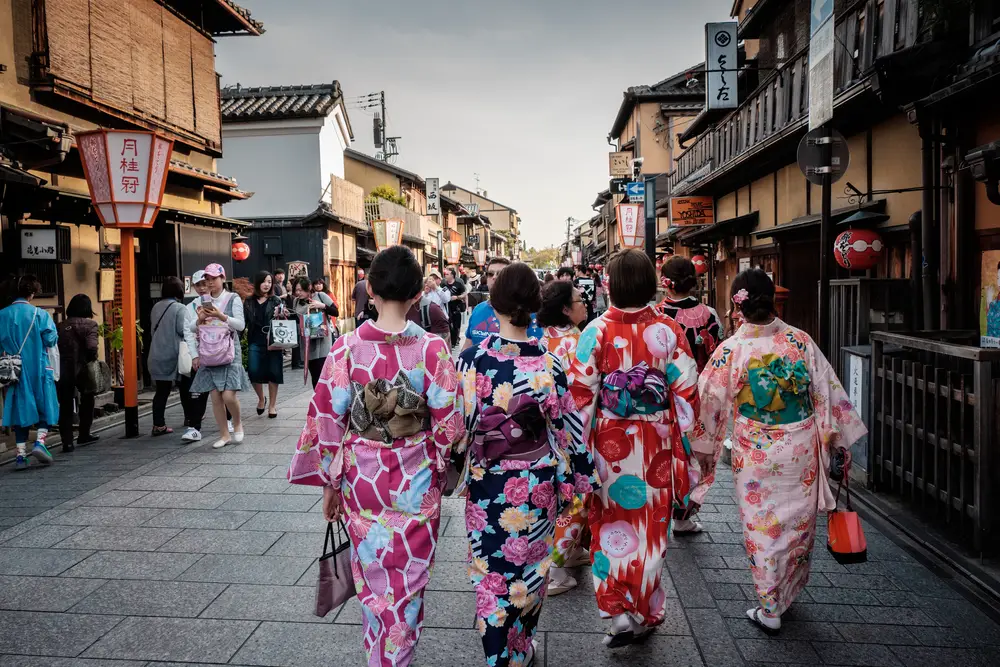
This historic district, once a stopover for visitors to Yasaka Shrine, retains its classical charm with preserved machiya houses and exclusive ochaya (tea houses), some of which are centuries old. As you wander through the narrow lanes, you’re tracing the same paths that have been walked by geiko and patrons for generations. The best time for a Gion visit is in the early evening when the lanterns are lit, and the mystery of the night begins to weave its spell.
While the elusive world of geiko is bound by traditions and private performances, visitors may enjoy cultural shows at Gion Corner or arrange an authentic dinner accompanied by geiko entertainment, giving a rare peek into this fascinating aspect of Kyoto’s heritage.
The Majestic Fushimi Inari-Taisha Shrine Gates
As expected from the poster child of Kyoto, the Fushimi Inari-Taisha Shrine is a sight to behold, with its seemingly endless torii gates winding up Mount Inari. Each vermilion gate, gifted by individuals or businesses hoping for prosperity, creates a mesmerizing labyrinth that captivates the hearts of those who walk beneath its arches.
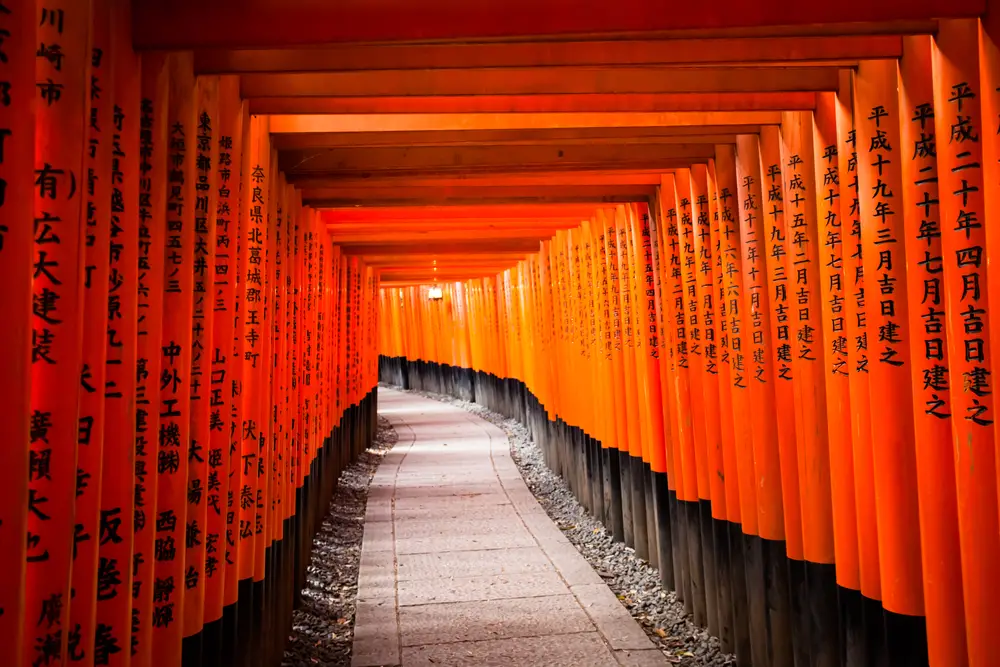
Visiting the shrine after dusk offers a unique and mystical experience. As the sun sets and the crowds disperse, the lantern-lit paths become ethereal, accentuating the spiritual atmosphere of this sacred mountain. A night excursion requires preparation and caution, but the reward is a deeply personal and reflective exploration of Shinto spirituality and tradition.
Exploring the entire mountainside trail can take up to 2-3 hours, so comfortable footwear and ample time allowance are recommended. As the shrine grounds are extensive and extend up the mountain, the further you climb, the fewer crowds you’ll encounter, allowing for a quiet communion with nature and the divine.
The Intricacies of the Kyoto Imperial Palace and Gardens
The Kyoto Imperial Palace, once the residence of Japan’s Imperial Family, stands with elegance, embodying the pinnacle of classical Japanese architecture and garden design. Though the current structures are reconstructions from the 19th century, their meticulous preservation allows a glimpse into the life of royalty in the Heian period.
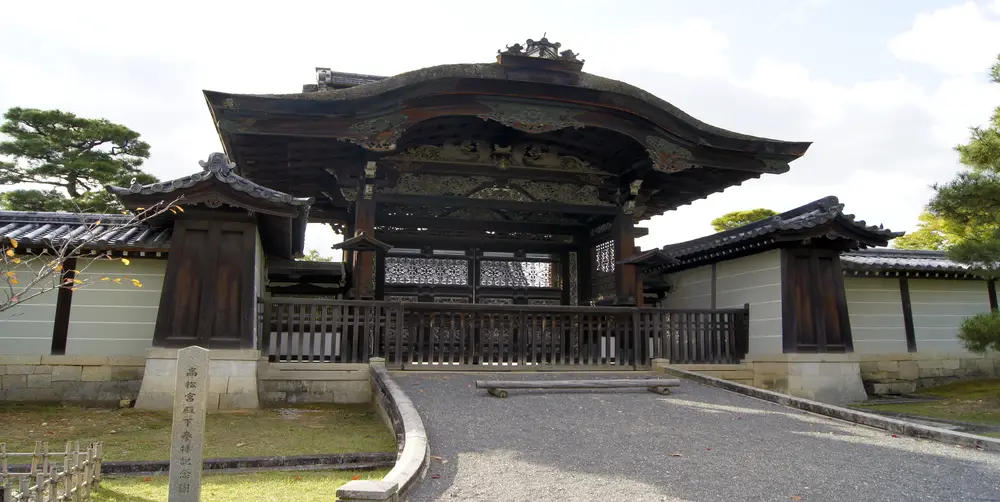
The surrounding gardens, known as Kyoto Gyoen National Garden, are a vast expanse of well-manicured lawns, gravel paths, and ornamental ponds, providing a peaceful escape for locals and tourists alike. Flower enthusiasts will marvel at the blossoming trees during sakura and ume seasons, while autumn brings a vivid display of changing leaves.
To delve deeper into the history and nuances of the palace, joining a guided tour is highly recommended, as it’s the sole way to access the interior of the palace. Free English tours are usually available, but require online registration in advance. The park, on the other hand, is open to the public and offers a tranquil setting for picnics, leisurely strolls, or simply a moment of respite from the bustling city.
From Kaiseki to Kyoto-style Sushi
As a city revered for its role in evolving Japan’s rich culinary legacy, Kyoto serves up a feast for both the palate and the eyes. Food connoisseurs will find themselves enchanted by kaiseki, an artful form of traditional multi-course dining that embodies seasonal sensitivity and a profound aesthetic appeal. Precision and care are evident in every dish where local, seasonal ingredients are transformed into edible masterpieces.

Moving towards other gastronomic delights, Kyoto-style sushi offers a twist on the classic sushi experience, accommodating Kyoto’s landlocked status with cured and preserved marine components. Revel in a taste of the region’s past with saba-zushi, featuring mackerel atop vinegared rice, all wrapped in kelp. The mellowness of the cured fish juxtaposes perfectly with the sharpness of the vinegary rice, creating a flavor profile unique to Kyoto’s culinary landscape.
To savor these experiences, one must venture beyond the mainstream restaurateurs and settle into the intimate settings of Kyoto’s hideaway eateries. Places such as Kikunoi, renowned for its Michelin-starred kaiseki meals, or Sushi Matsumoto for an impeccable sushi course. For those seeking a more immersive atmosphere, Kyoto’s quaint tea houses offer a perfect retreat for enjoying matcha and traditional sweets in an environment steeped in history.
Participating in a Traditional Tea Ceremony
In Kyoto, tea is not merely a beverage; it is a pivotal medium through which history, hospitality, and philosophy are shared and appreciated. The traditional Japanese tea ceremony, known as the Way of Tea, offers a serene lens through which one can garner a deeper understanding of Kyoto’s humane aesthetic and the Zen principles woven into the fabric of Japanese culture.

Partaking in this cherished ritual involves observing the meticulous preparation and presentation of matcha (powdered green tea), while embracing ichigo ichie (one time, one meeting) — the idea that each encounter is unique and transient, never to be replicated. Numerous establishments throughout Kyoto provide visitors with the opportunity to engage in a tea ceremony, with places like Camellia and En offering comprehensive experiences catered to foreigners’ curiosities, all while ensuring an authentic representation of this ceremonial art form.
In the heart of the Gion district or tucked away by the Philosopher’s Path, tea houses invite aficionados and novices alike to step into the subtle, profound realms of Zen. Understand harmony (wa), respect (kei), purity (sei), and tranquility (jaku) through a practice that has been refined over centuries, becoming an essential thread in the cultural tapestry of Kyoto.
Discovering the Philosopher’s Path During Sakura Season
The Philosopher’s Path in Kyoto, named after the esteemed Nishida Kitaro, who once frequented this route, is a tranquil walkway that becomes a vision of splendor during sakura season. Imagine the soft, ephemeral cherry blossoms forming a delicate pink canopy, their petals fluttering down like snowflakes upon the serene canal that the path traces. This extraordinary display of nature’s fleeting beauty creates an atmosphere that is both inspiring and contemplative, embodying the wabi-sabi aesthetic of impermanence and imperfection.

Sakura season, which typically peaks in early April, offers the perfect backdrop for this quintessentially Kyoto experience. Visitors from around the globe flock to capture the blossoms’ transient glory and partake in hanami (flower viewing) parties under the trees. For a less crowded experience visit nearby temples like Ginkaku-ji (Silver Pavilion) or discover hidden gems such as Hōnen-in which provide a peaceful sanctuary away from the bustle.
The enchantment extends to the charming cafes and authentic craft shops sprinkled along the path. Stop for a traditional sweet treat at a café overlooking the canal, or find the perfect handmade souvenir — a reflection of the city’s deep-rooted artistic spirit — to encapsulate your memories of the blossom-draped Philosopher’s Path.
Shopping and Craftsmanship in Kyoto: Nishiki Market and Beyond
An exploration of Kyoto would be incomplete without delving into the vibrant maze of Nishiki Market. Known as ‘Kyoto’s Kitchen’, this bustling corridor is lined with stands showcasing a mesmerizing assortment of local produce, artisanal crafts, and delectable foodstuffs. Avail yourself a taste of fresh tako tamago (baby octopus with a quail egg) or indulge in delicate sweet treats that are as much a feast for the eyes as for the palate.

For the discerning shopper seeking handcrafted treasures, venture beyond Nishiki Market into the surrounding artisan shops. Kyoto excels in a variety of traditional crafts, and travelers can discover areas specializing in everything from exquisite kimonos and obi sashes to finely wrought ceramics and lacquerware. Family-run establishments like Miyawaki Baisen-an offer handmade fans while legendary studios such as the century-old Kodai Yuzen-en provide a glimpse into the art of kimono dyeing.
Whether you prefer browsing through antiques in the historical district of Teramachi or seeking out contemporary designs in the buzzing downtown area of Shijo-Kawaramachi, shopping in Kyoto offers a remarkable journey through the craftsmanship that has defined the city for centuries. These shopping escapades afford visitors the chance to bring home more than mere souvenirs: they become keepsakes of Kyoto’s timeless artistry and cultural legacy.
Conclusion
We invite you to immerse yourself in the rich tapestry of Kyoto’s heritage, where ancient temples and modern marvels live in harmony. As you traverse through the city’s cobblestone streets, let every step uncover a new facet of Kyoto’s charm, and every taste leaves an indelible imprint on your culinary adventure.
In your explorations, carry a heart of respect and mindfulness, cherishing the customs and traditions that make Kyoto a treasure within the global landscape. Whether your journey leads you to a quiet temple garden or to the vibrant ambiance of a bustling market, may each moment in Kyoto leave you with a profound sense of wonder and a collection of memories to cherish.
We encourage you to find your own rhythm in this city of enduring splendor. Discover your favorite temple hidden away from the crowds, your preferred street food stall, or the most moving ceremony.
Kyoto is not just a place to visit; it is a realm to experience, resonate with, and hold close long after you’ve returned home.
